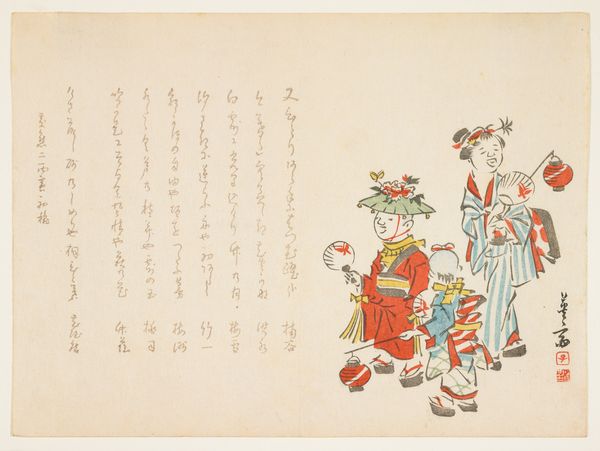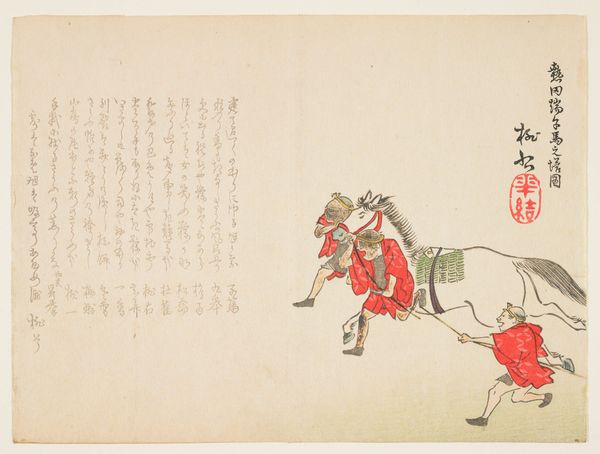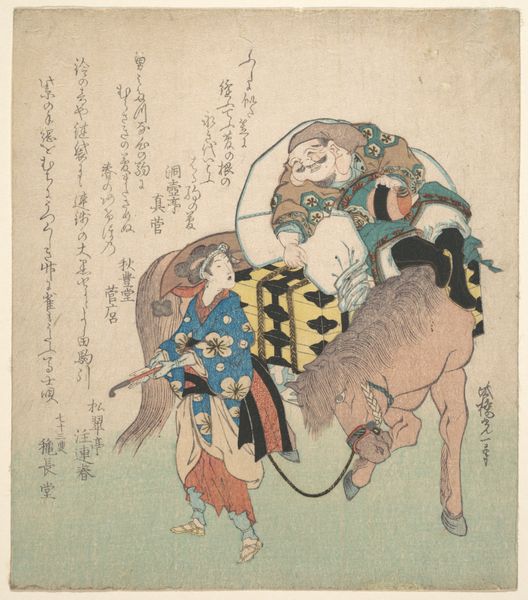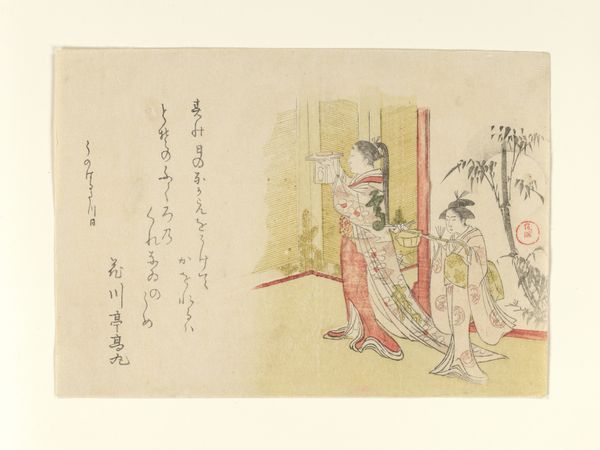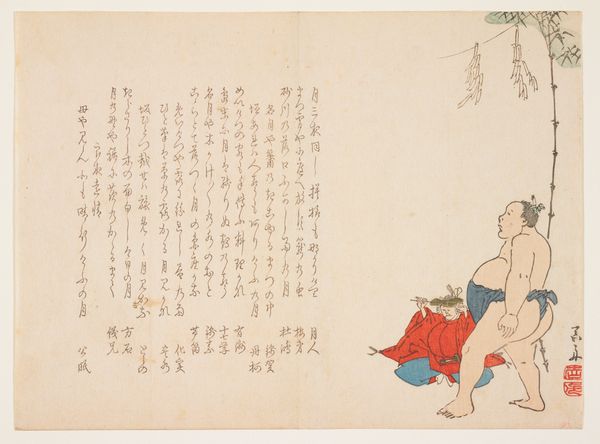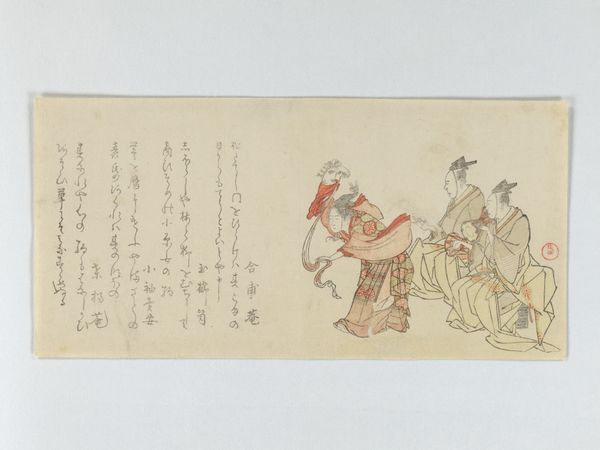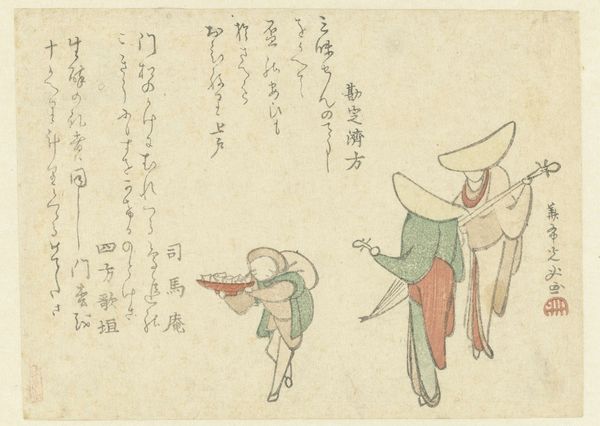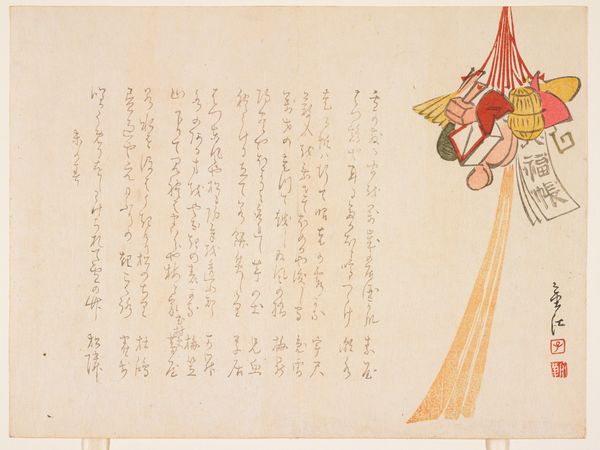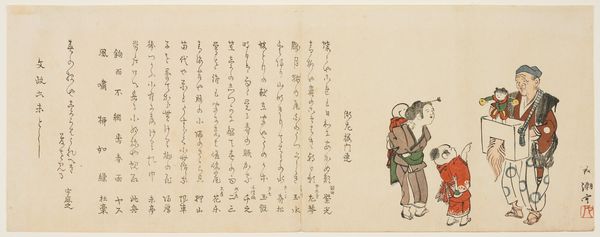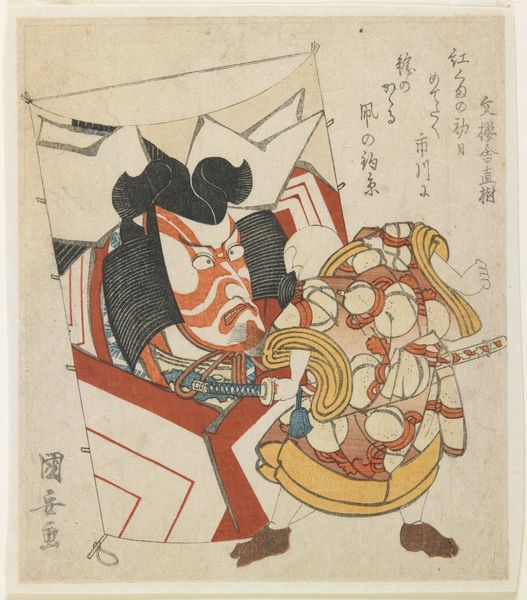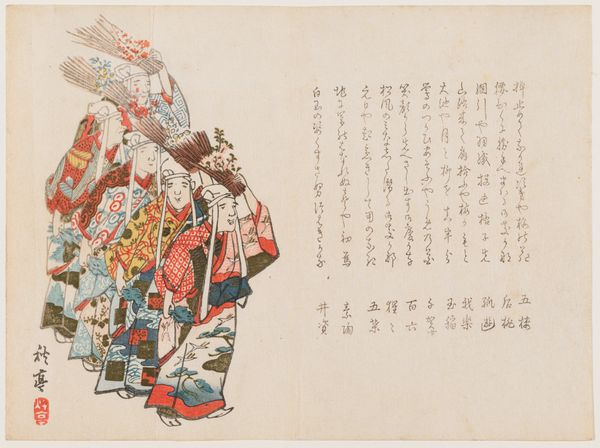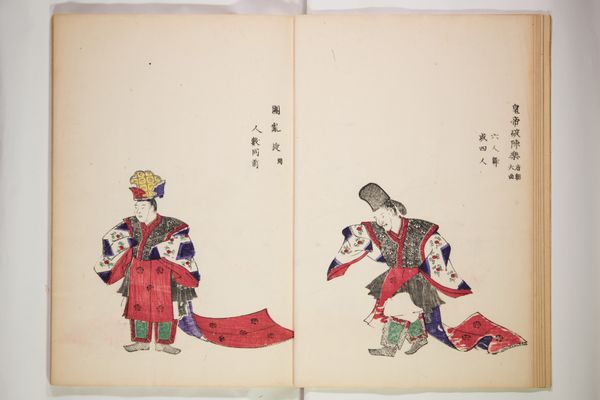
(Man and Women in Daigoku God Coustume for Kasuga Wakamya Shrine Festival) Possibly 1864
0:00
0:00
drawing, print, ink
#
drawing
# print
#
ukiyo-e
#
ink
Dimensions: 7 1/8 x 9 5/8 in. (18.1 x 24.4 cm) (image, sheet)
Copyright: Public Domain
Curator: This is an ukiyo-e print titled "(Man and Women in Daigoku God Costume for Kasuga Wakamiya Shrine Festival)," likely created around 1864 by Satō Hōdai. It’s a drawing printed with ink. Editor: Oh, what a cheerful, slightly absurd couple! They look like they're ready for a party, all bundled up in their festival gear. It's whimsical and has this folk-tale charm. I wonder about the characters portrayed and the meaning behind such adornment. Curator: The print features figures costumed as Daikoku, one of the Seven Lucky Gods, associated with wealth and prosperity. The Kasuga Wakamiya Shrine Festival in Nara is indeed famous for its lively procession, in which participants don elaborate historical costumes. They likely paraded around dressed in divine characters. Editor: Divine, yes, but that mallet the foremost figure carries is fascinating. Is that like a portable lucky charm or some kind of status symbol? And what about those capacious bags? Are they supposed to be holding treasures? Curator: Precisely! Daikoku is traditionally depicted with a mallet – said to grant wishes when struck. And you’re on point! Those bags signify bountiful harvests and prosperity. It’s not just about gold. Also the figure looks really jovial and pleasant. He probably likes to strike it and eat something afterwards. Editor: So, this isn't merely a portrait but an invocation of fortune itself, woven into a celebratory ritual. Knowing that they appear at a festival really underscores how costume plays a role to represent wishes in visual culture. It creates continuity and a space for shared emotions, or else: where do all our lucky-promising figures even originate? Curator: Indeed, it’s an active embodiment of good luck rather than a passive observation. They're almost like walking, talking blessings for the community! To be fair, though, I'd like to get them to explain why this print lacks color. The original piece has many more colorful iterations. I don't dislike the drawing, but something feels lost in translation. Editor: Hmm, in such matters the emphasis perhaps lies with a deeper essence instead: an original, purified form – a way of showing cultural memory, stripped from additional distraction. Curator: Perhaps. And now I wonder how many viewers have felt the stirrings of fortune just by gazing at these ink-drawn gods. Editor: A print acting as an enduring emblem of luck itself – it is still quite enchanting, even today.
Comments
No comments
Be the first to comment and join the conversation on the ultimate creative platform.
